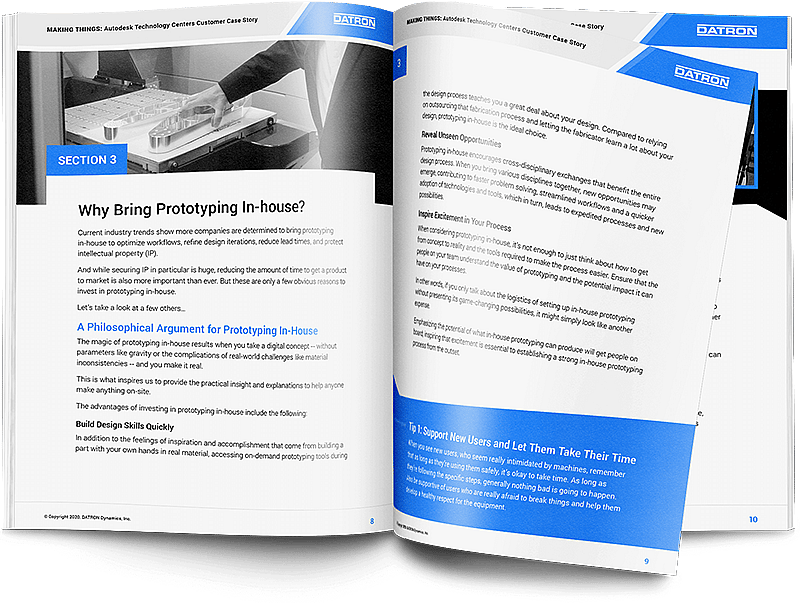Speaking of increased complexity, are users required to demonstrate a certain level of expertise in order to embrace and master the skills necessary for in-house prototyping?
Not at all.
In fact, the Autodesk team members we spoke to observed that the residents who succeed at the technology centers are those who stay curious and continue to learn, which builds their confidence using the software, tools, and machines.
In other words, expertise is not required, but a willingness to learn, practice, and advance professional prototyping skills certainly is.

Quickly Getting Up to Speed
Of course, you want to support new users and provide them ample time to get comfortable with the machines. However, you also have a vested interest in getting your staff up to speed on in-house prototyping processes to support the success of your operation.
To that end, it helps to provide a Quick Start Guide to keep teams safe and prevent damage to the equipment. You can think of this step as a smart shortcut, but also a way to present literature on best practices for optimal operation of the machines.
For instance, despite the intuitive interface of a DATRON, there are important aspects of using the machine, like powering it down at the end of the day, that require education and communication.
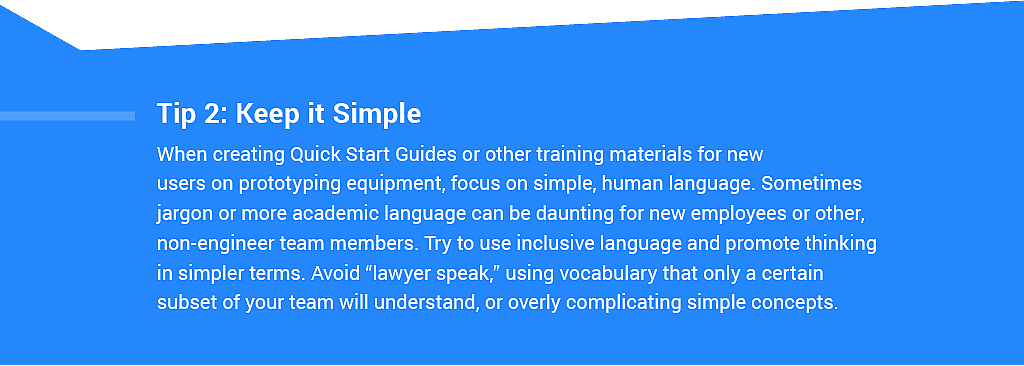
This is where having guides approved and published ahead of time ensures that the requisite information is delivered to everyone in the same format, keeping your team on the same page—literally.
QuickStart Guides are meant to support the hands-on training by walking a user through individual machines step-by-step, including the user interface, safety features, essential order of operations, and how to process material using the equipment.
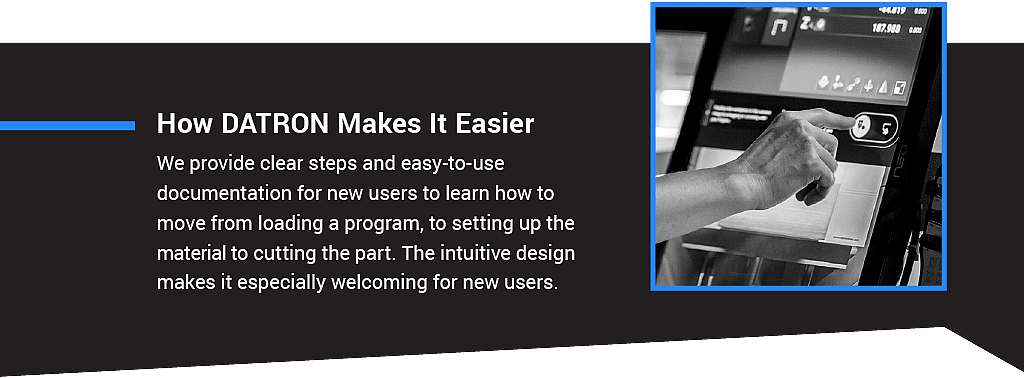
Hands-On Experience Is Key
In addition to providing turnkey tools, accessible processes, and quick-start guides, effective training must also factor in a person’s background and experience.
For example, a lot of architects and designers who primarily work in a virtual CAD space and may not have a lot of hands-on fabrication experience with a range of materials and processes.
Some of these users haven’t had the opportunity to experience the demanding physical environment where one must pay attention to not only what they’re doing, but also everyone else, for safety reasons.

Thankfully, that’s something that can be taught through hands-on experience.
With something like a CNC machine, you’re not just watching how the machine is cutting, you’re listening and learning what the machine sounds like when it’s running.
Part of bringing in equipment to create a prototyping environment is figuring out how to train new users in awareness. This is where the practical experience, provided by spaces like the Autodesk Technology Centers, comes into play to build a solid foundation and community of users.
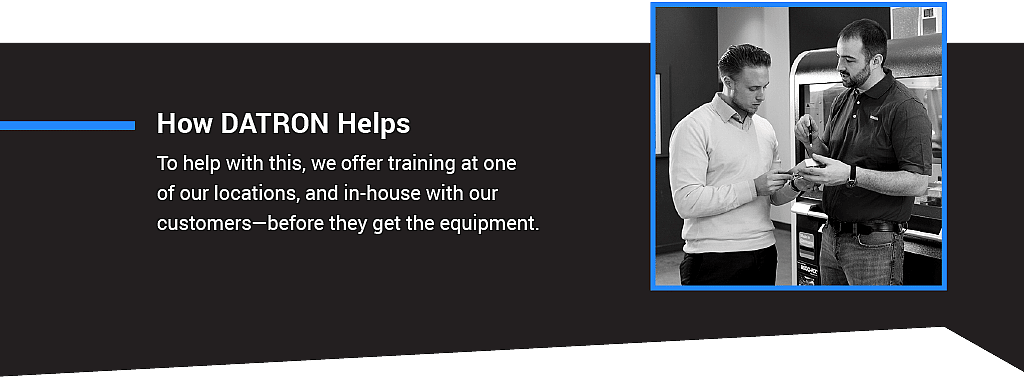
Create a Clear Pathway of Learning
Autodesk’s CNC Pathway is the bridge to learning the CNC machines. The Pathway spans three days, which are broken into four-hour blocks. This intensive dive introduces users to the steps required to turn a 3D drawing into the G-code that a CNC machine like the DATRON can use as instructions.
After taking the CNC Pathway, the Autodesk Technology Center workshop team provides residents with machine-specific trainings. For example, the DATRON class takes about three and a half hours and wraps up with the requirement that residents make a certification part upon class completion in order to prove what they know and that they are following our best practices.
At this point residents can start making their own parts; however, residents never run parts without rigorously testing their CAM in a simulation environment.
Test in a Simulation Environment
The CAM environment is included with every install of Fusion 360. Toolpath simulation is always available and always free to all users. Autodesk puts a heavy emphasis on the importance of the virtual environment and necessity to protect the operator and machine.
This provides a chance to uncover challenges before working on an actual CNC machine. The simulation environment encourages experimentation to find out where things might go wrong, helping users avoid encountering these instances at the actual machine.
Consistent Training Builds Confidence
One important aspect of the Autodesk Technology Center training curriculum is unifying the training with a consistent visual language. It’s important for new users to go from one class to the next and have a cohesive experience where all trainings are offered under one roof and connected by a thread of continuity.
“The whole program is geared towards resident success. We don’t want to just make the machines and space available; we want to empower residents to use the equipment on their own and create a working environment that supports them to problem solve and focus on creation and innovation.“
Stefanie Pender, Senior Workshop Supervisor, Autodesk Technology Centers
Part of this involves acknowledging the shift in mindset required to move from a digital modeling environment to a physical prototyping space, as well as the value of mastering G-code. And while consistency is critical to this training process, open communication in an environment that encourages questions from residents is also key.
The Requisite Shift in Mindset
It’s important for designers and engineers who may have spent a lot of their career at a computer, to understand there is a shift in mindset that takes place when moving from a digital modeling environment to a physical space.
It’s immensely helpful to physically get your hands on actual materials—it helps you tune into how the material properties affect what you’re doing. Unlike strictly 3D modeling, you’re not just plugging materials into a virtual environment where a design might look good, but it’s impossible to machine or manufacture because you don’t have the right tooling to deal with the material
The Important In-Between: Getting Behind G-Code
A critical step of your workflow, which follows drawing and modeling, but precedes cutting, is generating G-code. While it may not be glamorous, G-code is what makes your tool do what you want it to do. This step is fundamental to how your drawing translates into a physical object.
A common misconception of CNC machines is that you can go from drawing your part on the computer to sending it directly to the machine for milling. That’s generally not the case. After you’ve drawn your part, you need to come up with instructions for the machine so that it knows exactly what to do.
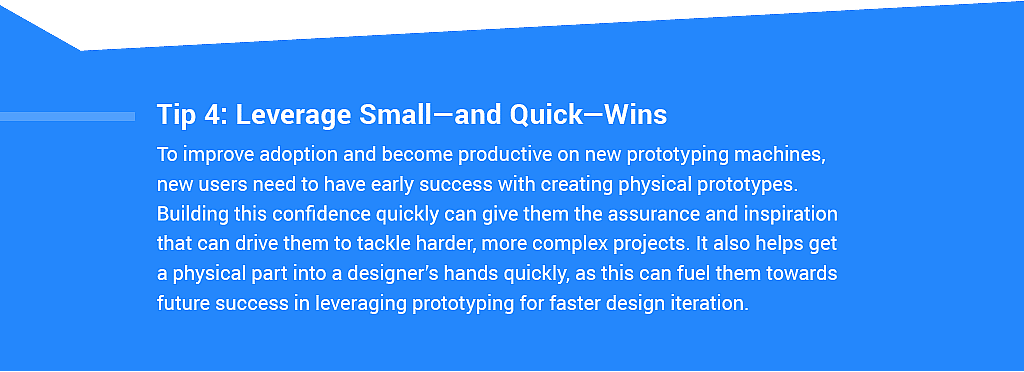
Autodesk software helps designers and engineers make G-code happen in the CAM environment. The goal is to help users make good decisions when producing a part to prevent tool breakage and machine crashes.
“Similar to prototyping, we aren’t running thousands of parts where machine downtime results in a catastrophic impact on productivity. We’re making more bespoke parts and prototypes; generally speaking, the residents are highly motivated to save money by understanding these processes and making the parts themselves.”
Stefanie Pender, Senior Workshop Supervisor, Autodesk Technology Centers
When designers and engineers are making parts and prototypes, they tend to reduce the complexity of drawings to increase the manufacturability of their parts. This means it’s ultimately going to cost them less in the long run since the parts are cheaper to make at scale. As a bonus, they gain understanding of how things are made.
Finally, it’s crucial that you create an environment where it’s safe to ask questions. Everyone who’s involved needs to understand that there are no bad questions and that having critical reasoning skills can help prevent users from making choices that might injure them or damage the equipment.
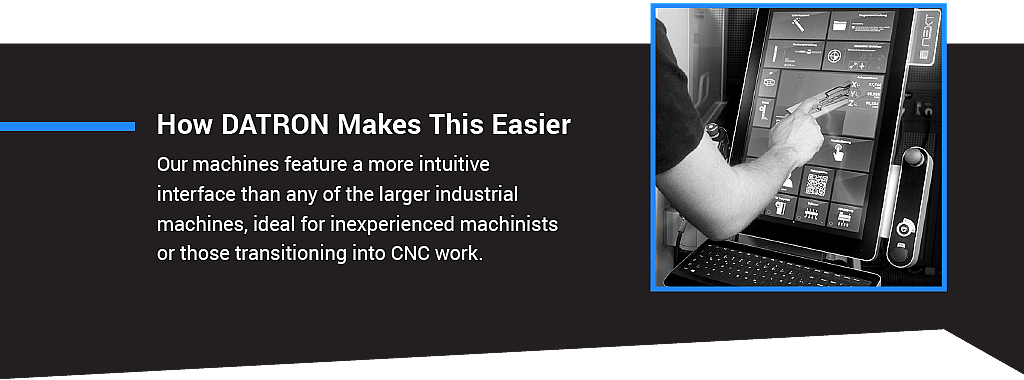
Cut the Learning Curve with the Touch Screen
One of the goals of the DATRON neo and its next control was to open up accessibility for the non-machinist. A lot of designers and engineers see these massive machines, with a sea of knobs and buttons, and are immediately intimidated.
At DATRON, we understand this dismay and has taken a different approach to CNC milling machines by eliminating the intimidation factor. DATRON’s touchscreen interface and tablet-like style feel familiar to even first-time users, which supports user confidence and easier, faster workflows.
Know Your Users’ Experience Level
The Autodesk Technology Centers team reviews applicants’ resumes and portfolios to determine their level of machining experience. Regardless, everyone goes through the same training; even if they’ve had 20 years in a machine shop.
To build from the same basic knowledge, it helps to know when a user is more experienced or needs more support getting started.

